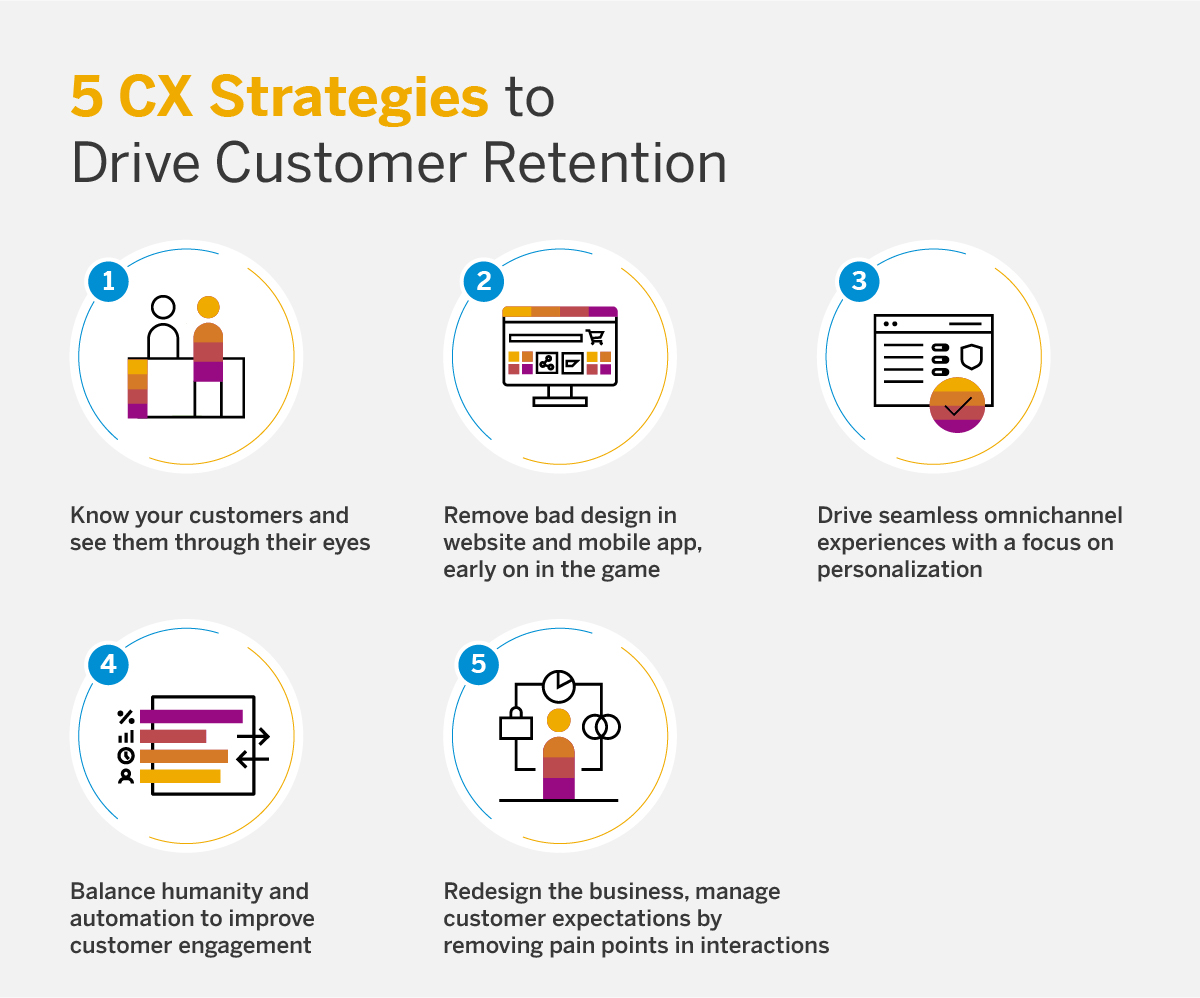As you find yourself amidst a traffic jam, absorbed in a podcast, you probably realize that times are very different now. Even though traffic moves at a snail pace, the information reaching you is at warp speed. Your listening experience depends on your network provider and the quality of the broadcast. You are probably multitasking as well, reaching your favorite brands through multiple channels, their social handles and online store.
For brands, the customer journey is no longer linear. For the customer, it means the experience needs to be consistent across these omni channels. There’s no doubt that customer experience is a priority for both businesses and technology leaders, mainly because customers are now digital. Since customers are now online anytime, anywhere, their expectation is for brands to be available as well and provide excellent customer experience.
About 80 percent of the brands believe that they offer superior customer experience, but only 8 percent of customers agree, according to an Adweek and Accenture research.

Is Customer Experience the Same as Customer Service?
Customer service is just one part of the customer journey, whereas the cumulative interaction that a customer has with a business is known as customer experience (CX). This includes both pre & after-sales experiences. Customer service is usually initiated by the customer and is reactive. The purpose of customer experience is to deliver meaningful and positive experiences through a strategic approach.
The mission and vision of a company, marketplace data, consumer research and competitive insight plays an integral role in developing an effective CX strategy. A successful CX strategy not only involves employees who directly interact with the customers but also stakeholders across all departments.
Insights and feedback from all departments will help an organization achieve its key CX objectives – improve the relationship with the customers.
Seismic Shift in Customer Experience
Up until a few years ago, customer experience and employee experience were not viewed the same. This has changed now since a clear connection has been established between customer experience and those of employees. According to an IDC survey, 85% of respondents believed that an improved employee experience and higher employee engagement translate to a better customer experience, higher customer satisfaction, and higher revenues for their organization.
Brands now understand that a happy employee who is enthusiastic and motivated at work can provide the same experience to the customers.
Customer behavioral shifts have led to the transformation of customer experience and how it’s perceived. Earlier, the customer interaction was one-to-one, but now it’s one-to-many. Here, the customer can access your brand across multiple touchpoints (online and offline stores, social handles, etc.). Each of these touchpoints needs to provide the same experience.
Enlightened with this mantra, brands are beginning to focus on the lifetime value of the customers. That’s customer retention.
It is crucial as it helps in understanding your customer and their journey with your brand. You must be informed about their first purchase, how they made it, what made them do it and how they developed a bond with your brand.
What Is Customer Retention?
An organization’s ability to retain its customers or customer loyalty is measured with the help of a metric known as customer retention. Customer retention can predict or reflect emotional ties to a brand, customer engagement, repurchase behavior and customer satisfaction.
It can also help to identify the number of loyal customers.
The first interaction is the inception of a customer relationship. Customer retention metrics kick in from the moment a customer makes the first purchase and gauge all subsequent interactions.
Organizations use the customer retention data to perform analysis on components of customer success and customer experience. These metrics help flag negative customer retention figures. This, in turn, enables companies to identify the reasons behind the drop and adjust product propositions accordingly.
It is more cost-effective to retain existing customers than to acquire new ones. Furthermore, retained customers are more likely to become brand ambassadors for the company.
These factors make customer retention an indispensable component of any effective customer experience strategy.
Measuring the Key Metrics of Customer Retention
Customer retention is measured using retention rate and is monitored continuously. To determine the rate, an organization identifies the period that it wants to record. This could be up to a month, a fiscal year, or more.
Retention rate is also determined using the following factors:
- The number of new customers that have been acquired over time (N)
- The total number of customers at the end of the time period (E)
- The customer base at the beginning of the time period (S)
The following is the formula to calculate the retention rate,
Retention rate = E-N/S*100
Organizations across diverse industries use varying customer experience strategies to gain repeat business. For example, every time a customer makes a purchase at Bombas, the sock and apparel retailer, the company donates a piece of clothing to a homeless charity or homeless shelter.
In addition to helping customers purchase items that they need, this process also helps the poor. The opportunity to help a social cause while shopping induces customers to come back and buy again.
These days, most organizations with a digital presence use chatbots or conversational AI to answer customer queries. Customers can either select from a list of pre-defined questions or type a question.
This kind of personalized attention makes a customer feel welcome & substantially increases the chances of repeat purchases.
To incentivize customers to come back, many businesses offer loyalty programs. For example, every time a customer orders tea or coffee at Nero, a London-based café chain, a stamp is punched on their loyalty card. They get a free beverage after nine stamps.
How Is Your Customer Experience Strategy Related to Customer Retention?
In a rapidly evolving landscape where consumer demands are constantly changing, the business will be primarily occupied with thoughts on engaging customers in experiences to make them stick with the brand.
The experience that an organization creates for its customers, either good or bad, directly affects the customer retention rate. Every point in a customer’s journey, their interactions with a company, their product experience and how your brand makes them feel sums up the customer experience.
A business can improve its retention rates by making changes that deliver a better customer experience. To bring about these changes, a company has to understand the overall experience that a customer has with its products and services.
There is a documented correlation between loyalty and customer experience. Loyal customers are much more likely to try out a new product or purchase again. It is a cycle where every time stellar customer experience creates loyalty, it drives retention rate, which in turn leads to business growth, coming full circle.
Conversely, lackluster customer experience can bring down the retention rates substantially. Nearly 96 percent of customers said they would leave brands that give lousy customer service, according to Forbes. In the Indian context, a recent OpenText survey highlighted that 68 percent of Indian customers would be put off buying again from a brand due to a bad experience. In fact, the same number (68 percent) do not believe there is such thing as a ‘customer for life’ anymore in 2021, implying that brands can no longer depend on customer loyalty to recover from bad CX. With every single interaction, it’s imperative that the customers’ experience is enhanced.

A successful customer experience strategy involves understanding the customer journey in full. This includes insights from product analytics. Armed with this data, businesses can make better decisions on improving their product features.
5 CX Strategies to Drive Customer Retention
To drive customer retention, major brands are basing their CX strategies around personalization, convenience and developing great relationships to ensure physical or digital footfalls. Since customer experience is no longer relegated to a single platform, brands need to think omnichannel.
There will be several factors that may be entirely out of your control. That said, here are the top CX strategies that you can implement to drive customer retention.
1. Knowing Your Customers and Seeing Them Through Their Eyes:
Your customer profiles are constantly evolving. As business owners, you have to be prepared to respond to these changing trends and make adjustments whenever necessary.
There are several phases through which you can grasp customer personas better.
Customer engagement is a common strategy that encapsulates opportunities for direct feedback to draw out valuable insights and data. Moreover, you can always keep track of their behavioral patterns by paying close attention to metrics that can be readily available using your customer service CRM.
When you offer a gratifying experience, customers are more likely to remain loyal to your brand, reports a study by Kantar ShopperScape Research.
2. Remove Bad Design Early On In The Game:
An article in the Interaction Design Foundation states, “when UX improves the customer experience, it raises a company’s KPIs up to 83% in conversion lift.”
Most brands understand the value of having a strong online presence but do not really focus on the importance of UX or User Experience. In this digital age, website and mobile app designs matter. And the overall customer experience that you offer via these platforms is crucial.
Your customers are omnipresent across channels. A single bad experience can turn them away from your brand for the duration of their lifetime. What’s more, they have the potential to influence prospective customers too.
In the larger scheme of things, that can contribute to a significant loss in revenue over a while. The crux of the strategy is to make it easy for your customer to find what they are looking for. Remember to factor in emotion as that is a massive driving force when making a purchase.
3. Seamless Omnichannel Experiences with Focus on Personalization:
More than 60 percent of customers are comfortable interacting with brands using multiple channels, and irrespective of time, place, device, or medium, they expect consistency. This is probably why businesses are practically bombarding customers with multiple online and offline brand touchpoints.
While that can be mostly good to win customers, it also runs the risk of any one platform providing a sub-par experience which can contribute to losing lifelong clients too.
Progressive companies can invest in automation tools such as customer experience platforms and dedicated resources that can help in understanding what their customers’ experiences are across brand platforms and touchpoints. The right insights can ensure positive outcomes.
4. Balancing Humanity and Automation:
From getting familiar with Alexa and Siri to robots taking over, the human race has long since gone beyond the early days of artificial intelligence. Chatbots are quickly bringing about integration in the communication channels by filling in obvious gaps in customer service processes.
The future predicts an important place for AI in our lives where more technical and mechanical aspects of the service business will be tackled by it. And customer service agents will take on the role of handling more complex issues.
That said, the focus should still be on the human and machine, and not the other way round. A Microsoft survey found that 69% of customers still prefer brands to offer some form of personalized customer care. So, while automation is great, customers should be able to access a human interface when they are needed.
The role of automation in customer experience should be to extract learnings from human interactions. The objective of this strategy is to allow a shift in employee behavior to improve customer engagements that directly impacts customer retention.
5. Redesign the Business from The Customer Back:
Differentiation of the business purpose by itself will not work in your favor as a successful experience strategy. List your brand’s customer experience stages. Think hard if there are any opportunities to impress.
Showcase your USPs, but the point of focus should be to enhance the customer journey first and make strategic improvements that make up the gist of it.
Customer psychology and its applications should be right at the forefront that can help the brand to design supporting processes. Concentrate on practical issues, where even the most insignificant detail matters. Overlook the superficial.
Start seeing the world through the eyes of your customer. This is because ‘customer journeys are significantly more strongly correlated with business outcomes than are touchpoints’ says a research report by McKinsey.
The objective is to manage customer expectations by removing pain points in interactions between the customers and the business. A culture of continuous innovation is set in motion, which will ultimately aid in making fundamental transformations within the organization.

How Does Customer Retention Benefit the Business?
Sometimes, organizations commit the mistake of pursuing new customers at the expense of providing better service and experience to existing customers. That’s a strict no-go zone.
Those that deploy their CX strategies successfully will benefit in the long run.
Profitable: By some estimates, even a slight increase in retention rates can increase profits significantly. As opposed to first-time buyers who tread cautiously, existent customers are more likely to try out new offerings & spend more.
Cost-effective: It is significantly cost-effective to retain an existing customer than to acquire a new one. Since the existing customer base is familiar with the products & services offered by the company, informing them about the business proposition is a less expensive affair than marketing to new customers.
Acquisition: Organisations have to continuously better their products & services to attract new customers. Candid and valuable feedback from loyal customers can help companies stay ahead of the competition.
Ease of Business: Essentially, customer retention is relationship building. Good relationships are mutually beneficial and serve the greater good. A customer who enjoys a positive history with a brand is likely to repeat the purchase. This establishes a steady revenue stream, helping employees reach their targets. It also enables employees to spend more time building customer relationships which, in turn, enhances loyalty.
Closing Thoughts
Forrester reports that businesses that are concentrating on offering the best customer service experiences are growing at an exponential pace. When market saturation is at its peak, the need to deliver a top-notch customer experience becomes an absolute must.
An outstanding experience is something that your customers will remember and will obviously want a repeat of. The retention rates and engagement value automatically get the boost.
Remember that the concept of customer experience is about people. And the very being of the business depends on this sole resource. By embracing insights into what your customers expect of you, will continuously drive businesses to align their evolution in line with customer expectations. In the end, those who dig deep and develop a more intricate understanding of their customers will win the race.



